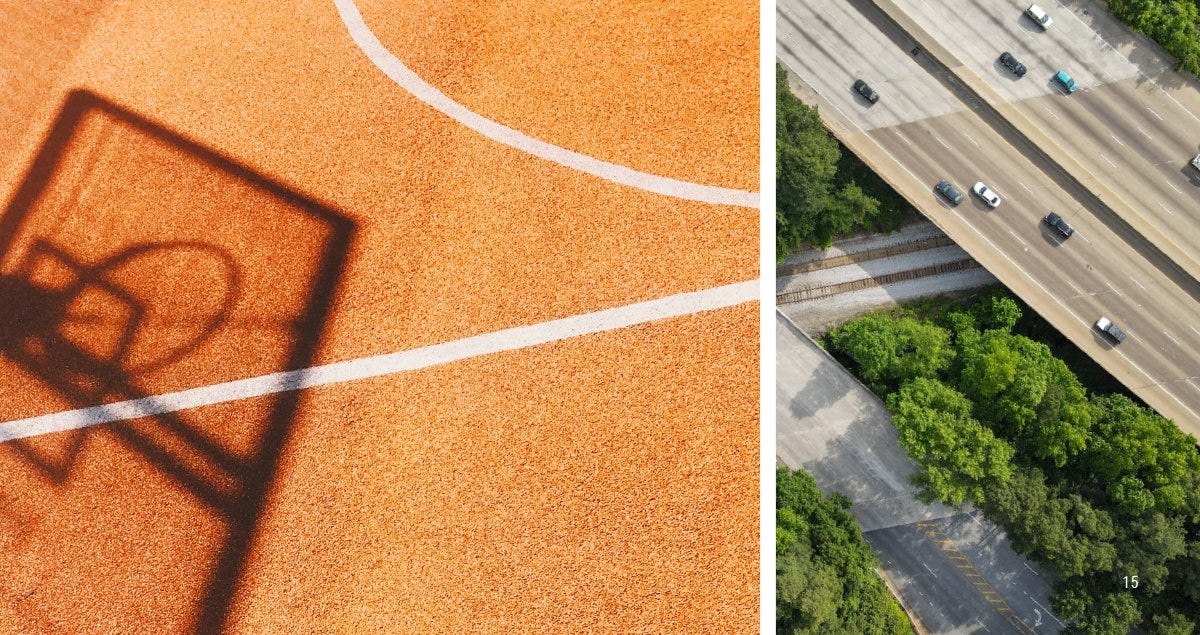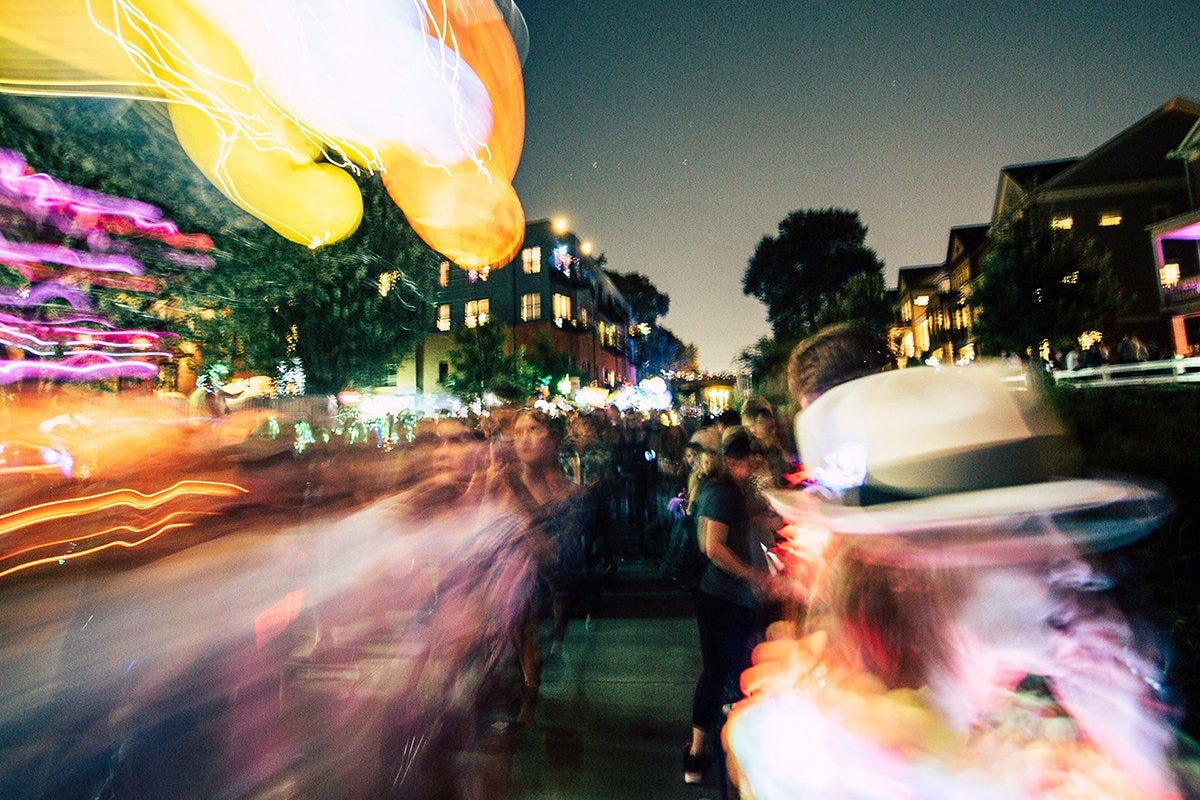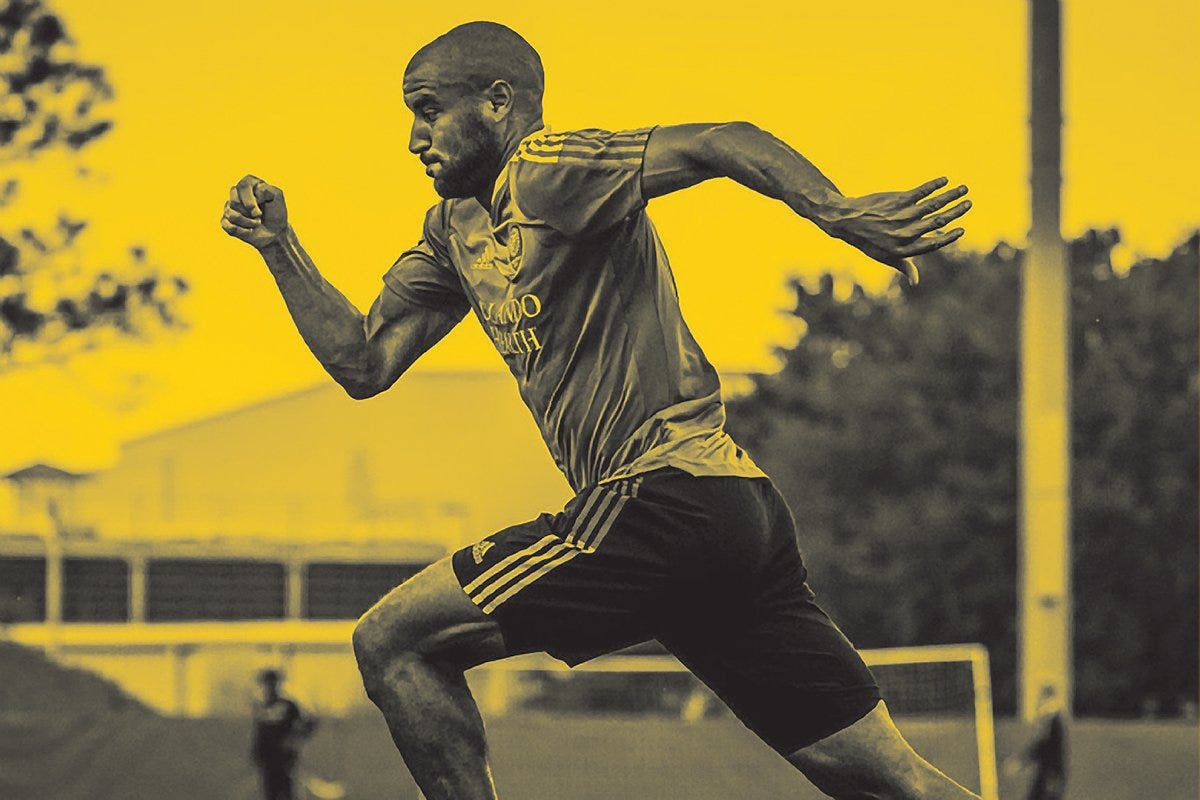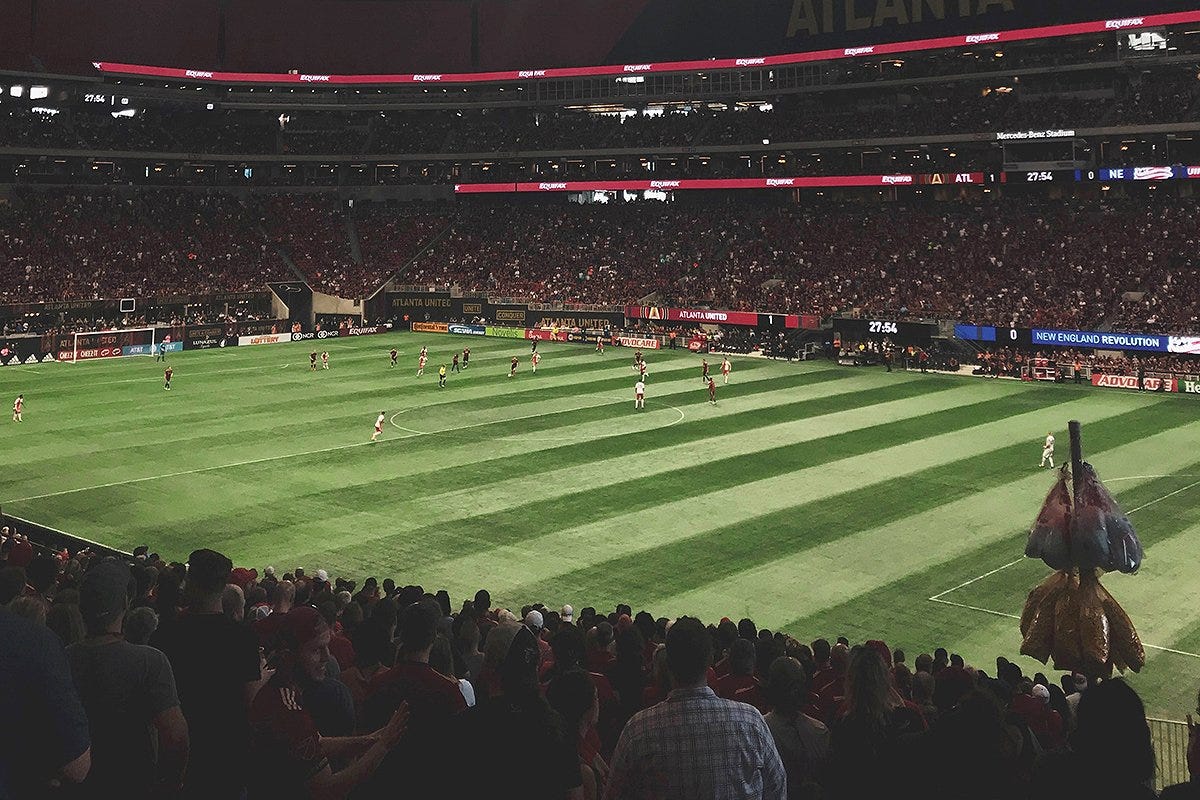Tesho Akindele wants to see Athletes as Urbanists
We have a unique opportunity and obligation to give back to our cities.
Written By Tesho Akindele
This piece was originally printed in Issue 2 of Southern Urbanism Quarterly.
When I began publicly sharing my interest in urbanism and real estate development, the feedback was extremely positive. But I am only one of the thousands of athletes living and playing in cities they love. Imagine the impact we could have if more of us joined this movement and began working to build better neighborhoods. That’s why more athletes should get involved in real estate development and be a voice to champion the ideals of good urbanism.I. Invest, Develop, Advocate
Athletes can have an outsized impact on the cities that have embraced us
As athletes, we hold a unique position in society. We are often seen as role models, trendsetters, and, increasingly, as activists. Young and old, Black and white, red and blue—athletes bring all types of people together in a special way. When we step out under the bright lights, we represent not only ourselves but our city. I’m here to lay out my thoughts on why athletes are well positioned to invest in, advocate for, and build great cities.
You see the love that cities have for their athletes all around. Billboards are made, posters are hung, jerseys are worn, and flags are flown. On game day, thousands of fans come together in support of their city, their team, and their athletes. Our performance on the field can drive civic and personal happiness. It can change lives for decades to come.
We have the opportunity—or rather, the responsibility—to think bigger.
As a young adult, which virtually all athletes are, having the hopes and dreams of so many resting upon your shoulders is a huge responsibility—one that should be handled with humility and respect. For a brief period of time, we athletes can influence the world in meaningful ways, not only on the field but also in the communities that have given us so much.
Most athletes understand at some level that giving back to the community is important. We sign autographs after practices and games, visit children in the hospital, and volunteer at local schools. These actions are all impactful in their own way, but in my opinion, we have the opportunity—or rather, the responsibility—to think bigger.
What if we decided to invest not only our time back into the community but also our money, experiences, relationships, and ideas? What if we used our platforms to transform our cities into more beautiful, more affordable, more diverse, healthier, and greener places? The good news is—we can. The vehicles for that change are thoughtful development and good urbanism. And on these fronts, athletes are in a unique position to lead.
There are a number of ways for athletes to engage with urbanism and contribute to urban development. We can direct money we already invest in real estate projects toward more values-based undertakings that deliver community change alongside financial returns. We can use our distinct life experiences to become developers ourselves and lead projects that improve the built environment, either during or after our careers. And at the highest level, we can use our voice and platform to advocate for proven policies and help bring the ideals of urbanism to a new audience.
II. Win and Help Win
Community-centered investing helps athletes and cities alike
A decade in Major League Soccer (MLS) gave me the opportunity to meet many professional athletes. Men and women from all over the world. From my wide-eyed 15-year-old teammates to battle-tested veterans and retirees, the one thing all athletes have in common is our desire to give back and make a positive impact. Most athletes give back with their time; many, with their money. But an often-overlooked opportunity to create change is through urban real estate development. Done well, it’s mutually beneficial for the athlete and the community.
Many athletes, myself included, already invest in real estate. We buy rental properties, flip houses, join syndication funds. Most of those investments are seen as strictly financial and completely separate from our desire to give back to the world. It doesn’t have to be that way.
As I thought about where to invest, there were so many issues to dedicate my time and resources to, but I had no idea where to start. One day it clicked: The way we build our cities is at the root of almost every other issue.
Depending on who you ask, urbanism represents many different ideas. To me, it can be summed up as “building better neighborhoods.” Like many athletes, I care about attainable housing, the environment, our school systems, public health, and more. As I thought about where to invest, there were so many issues to dedicate my time and resources to, but I had no idea where to start. One day it clicked: The way we build our cities is at the root of almost every other issue. A 2021 article entitled “The Housing Theory of Everything” came to the same conclusion: Better neighborhoods lead to a better world. It’s this notion of “better” that lies at the heart of urbanism. There are around 4,000 athletes in the five major American sports making a combined annual salary of about $15 billion.
Think about it. That’s enough money to make a real difference. Some athletes have had the foresight and conviction to invest their resources in urbanist causes. One high-profile example is Magic Johnson, who partnered with Canyon Capital to create the Canyon-Johnson Urban Fund in the late ’90s. The fund ran for 11 years with the goal of improving housing, healthcare, and education in urban America. It “brought housing to the inner cities when no one was doing it” and “built mixed use with housing on top and retail on bottom.” From Harlem to Detroit, many of the investments from Canyon-Johnson catalyzed further positive change.
This story represents a classic “win and help win” situation. Thoughtful investments create positive impact, leading to solid returns. We all deserve the opportunity to live somewhere that is affordable, dense, and walkable, with diverse buildings and diverse groups of people. The problem is, due to lack of funding from lenders and investors, not enough of these great places are being built. The demand for high-quality urban spaces far outweighs the supply. And sometimes, because projects with less community benefit are simply easier, capital flows there. But investors like Magic, who use real estate to create communities instead of commodities, have been rewarded for their efforts.
All athletes can do something similar to what Magic did. Whether on a small scale by funding the rehab of a duplex or on a larger scale by being a limited partner in a multi-billion dollar project, the opportunity is there. It’s up to us to seize it.
III. Money, Grit, and Social Capital
Athletes can open development doors that others can’t
Success in real estate requires resources, tenacity, and connections. Professional athletes check all three of these boxes—a huge benefit and differentiator that few of us leverage. In this portion of my essay, I share why I see the life experiences of professional athletes not just as “perks of the job” but as factors that perfectly position us to excel as developers. The last section explained how athletes can invest in projects that drive change. This one discusses why we should eventually become the leaders of those projects.
For aspiring developers, the number-one barrier to entry is a lack of capital. In 2022, the average college graduate in the US made around $55,000. I played in MLS, a league that is not known for its sky-high contracts, but even the average MLS salary has climbed to a healthy $514,000. And that number is dwarfed by the eight-figure contracts that are becoming commonplace in other American sports. Citybuilding gives us athletes the chance to put those high salaries to work—while also benefiting the communities we’re a part of.
Aside from the money, successful athletes have other characteristics that lend themselves to entrepreneurship. Namely, athletes have the ability to excel in demanding situations and stay calm when faced with adversity. We put in decades of hard work and sacrifice to make it to the top of our sport. Our ability to perform under pressure is the difference between making the team and getting cut.
In 2014, I was just a kid with a dream, invited to the MLS Combine. We were in the Middle of Nowhere, Florida, showcasing our skills for the coaches and general managers who held our future in their hands. Play well, and you become a pro. Crumble under the strain, and your dream is dead. Those types of experiences are invaluable in preparing you for life as a developer, where you are under constant stress and are forced to adapt to an unpredictable world.
Not everyone has the composure required to conduct the symphony of a development project, but athletes do.
Developers spend their days navigating government rules and regulations, contractor schedules, delays, mistakes, and more—all while balancing the demands of financing their project and satisfying their investors. Not everyone has the composure required to conduct the symphony of a development project, but athletes do.
An area of untapped potential for many athletes is taking advantage of our unique social standing. Being a professional athlete comes with a certain amount of prestige. There are a variety of ways to utilize that status. One of the most impactful would be using it to jumpstart a career in real estate development. By doing so, we can create buildings that change not only our lives but also those of people in our cities. Many developers struggle to gain traction with the right people, but I quickly realized that as an athlete, most people were willing to meet me for coffee or hop on a five-minute phone call. Whether we’re raising money from investors, looking to galvanize the community behind a new project, or trying to connect with the city to clarify the building code, getting calls answered is a superpower that should not be taken lightly.
As I see things, the synergies between a career in pro sports and one in real estate development are undeniable. The skillsets translate seamlessly, and many of the barriers to entry are already broken down. Athletes from Roger Staubach to Shady McCoy have navigated both the world of sports and the business of real estate development. They cleared the way for athletes like me—and, I hope, many others—to follow in their footsteps.

lV. Using Influence for Good
What if Lebron James advocated for zoning reform?
So far in this essay on how and why athletes should get involved in urbanism, we’ve looked at this topic through the lens of athletes as investors and athletes as developers. Finally, we should think about athletes as advocates.
There are many people who advocate for better citybuilding. Urban planners, public officials, architects, developers, researchers—the list goes on. There are not, unfortunately, many athletes who have joined the cause. There are many possible explanations for this, but the most likely answer is arguably a lack of awareness. Most people, athletes or not, have never considered how a city gets built. Who decides what can get built and where? Why do some roads get bike paths and sidewalks while others don’t? Why is everything so far away that I’m forced to drive all the time?
I never thought about these types of questions growing up. I just accepted the city as a reality that was out of my control. When I was finally introduced to the concept of urbanism (after reading Jeff Speck’s Walkable City), I was instantly hooked. Ever since that moment, I have been spreading this message as far and wide as I possibly can: We don’t have to accept things the way they are. There is a better way to build our cities.
I would argue that most people enjoy places that are walkable, beautiful, dense, and full of life. So much so that they spend money to vacation in places like Paris or Disneyland. Countless professionals, civil servants, and activists have dedicated their lives to zoning reforms that would allow us to live in and near places like this, instead of experiencing urbanism only once a year for a week (if that). And those people could use some help.
Imagine if LeBron James lobbied to end exclusionary zoning in Cleveland.
This is where athletes come in. As I said above, we are often seen as role models and trendsetters. Through our careers, we build powerful platforms that let us reach thousands or even millions of people. What’s more, those people tend to take our opinions seriously. This gives us an enormous opportunity to create change—as well as a responsibility. As advocates, athletes can take the work done by so many in the urbanist community and amplify it to a new and larger audience. If they did so, it could be a game-changer for the way we build our cities. To illustrate what it would be like if the urbanist message were amplified, simply imagine if LeBron James lobbied to end exclusionary zoning in Cleveland. The issue would immediately have local and national news coverage, and policymakers in the city would be forced to comment with their thoughts. Change would be unavoidable.
Local activists could use LeBron’s call to action to demand changes to the city’s zoning map. And this wouldn’t just happen in Cleveland. If LeBron started talking about zoning change, millions of people around the country would become aware that it’s illegal to build anything other than a single-family house in the vast majority of their city. They would learn how parking minimums negatively affect the built environment. Support for the urbanist cause could balloon.

And as famous as he is, LeBron is just one person. If we had tens or hundreds of athletes talking about these issues, we could quickly create a real impact. Zoning reform unlocks the investment and development required to actually build better neighborhoods. It is a prerequisite to creating places that are beautiful, affordable, and pedestrian-friendly. But for zoning to strike people as a captivating topic, it needs a champion.
Up until now, there has been essentially zero overlap between athletes and urbanists. I want to change that. It might not happen overnight, or in a year, but eventually, I believe athletes will be a major driving force in the urbanist movement. Imagine a world where athletes from a variety of sports pooled their money to invest in thoughtful infill development projects. Imagine attending a local city council meeting and hearing your favorite athlete advocating for housing abundance. Imagine if more athletes felt empowered to bring their unique experiences, new perspectives, and diverse backgrounds into the business of citybuilding. The possibilities are endless. I hope to be a bridge between athletes and urbanists. Unifying the two groups, on a mission to build better neighborhoods.
Tesho Akindele recently retired from a nine-year professional soccer career where he represented FC Dallas, Orlando City, and the Canadian national team. Today, Tesho works for ATCO, a real estate development and operating company. His main focus is their Camp North End property, a 76-acre adaptive reuse and development project located in the heart of Charlotte, North Carolina.



